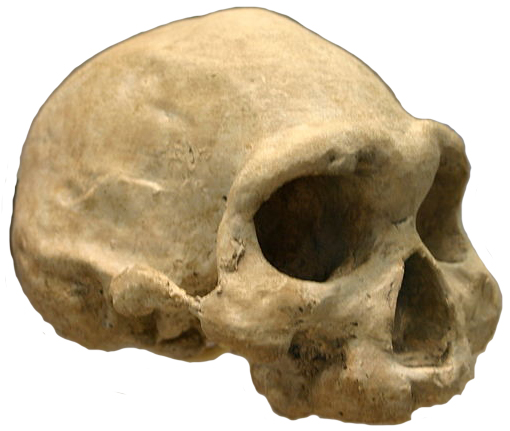
- Skull suggests three early human species were one : Nature News & Comment. Can be read here.
- Lahr, M.M., 2010. "Saharan Corridors and Their Role in the Evolutionary Geography of ‘Out of Africa I’". In: A. Baden et al. (Eds.), Out of Africa I: The First Hominin Colonization of Eurasia. Springer Netherlands, 27–46.
The Dmanisi skull 4, also known as D3444 with its mandible D3900, is one of five Homo erectus skulls discovered in Dmanisi, Georgia. Described in a publication in October 2006, it is believed to be about 1.8 million years old. The five Dmanisi skulls are the five oldest hominins ever found outside Africa, thereby doubling the presumed age of the human migration outside the continent. Since the publication of the Dmanisi skull 5 in 2013, all five Dmanisi skulls have been in the middle of an paleontological controversy: many hominin fossils thought to be different species, such as Homo ergaster or Homo habilis may not have been separate species. Most human ancestors were quite possibly a single evolving lineage.
For more information, click here. Or, Try these sources:
- David Lordkipanidze; Abesalom Vekua; Reid Ferring; G. Philip Rightmire; Christoph P.E. Zollikofer; Marcia S. Ponce de León; Jordi Agusti; Gocha Kiladze; Alexander Mouskhelishvili; Medea Nioradze & Martha Tappen (9 October 2006). "A Fourth Hominin Skull From Dmanisi, Georgia". The Anatomical Record Part A: Discoveries in Molecular, Cellular, and Evolutionary Biology. 288: 1146–57. doi:10.1002/ar.a.20379. PMID 17031841. Can be read here.